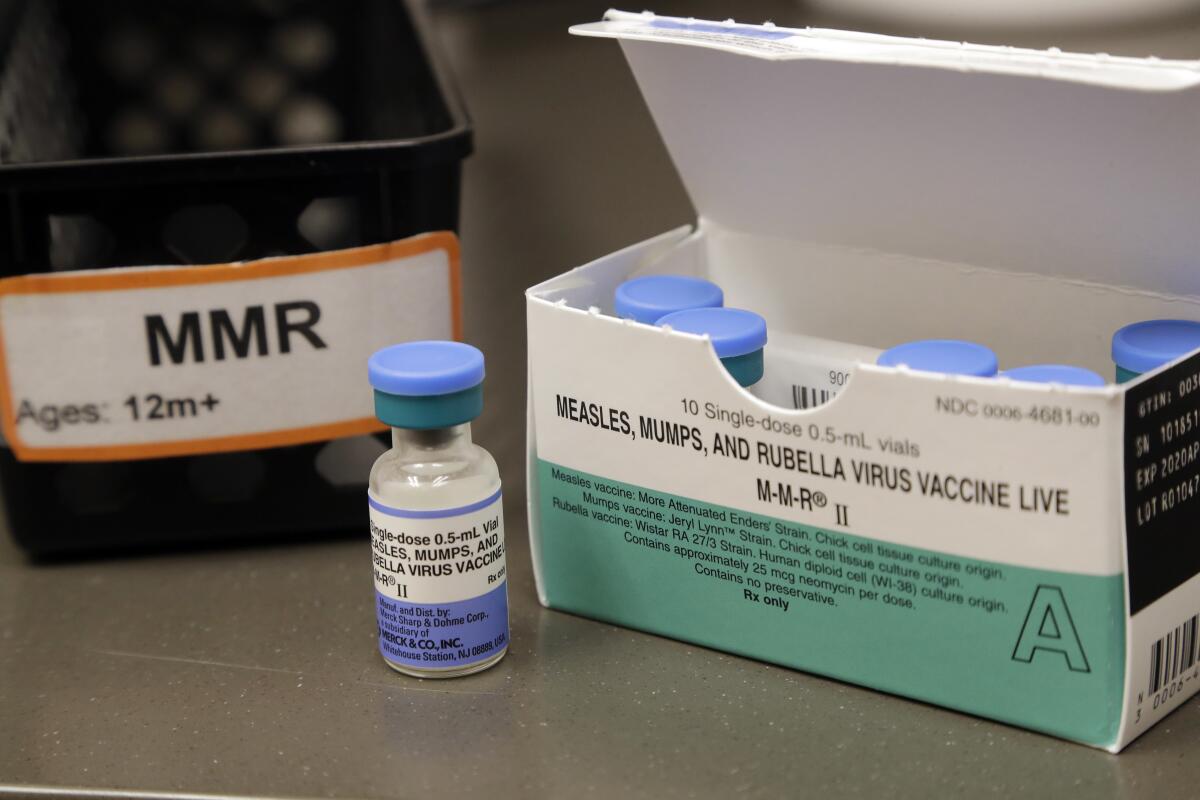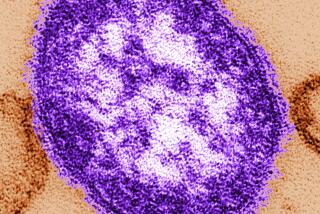L.A. County has its first measles case since 2020: What to do if you’re exposed

A recently arrived traveler at Los Angeles International Airport is the source of the first case of measles in L.A. County since 2020.
Measles is a highly infectious disease, and health experts say the best way to evade infection is immunization.
The Los Angeles resident was a passenger on a Turkish Airlines flight that arrived at 5 p.m. Jan. 25 at the Tom Bradley International Terminal, Gate 157. Anyone who was at Terminal B from 5 to 9 p.m. may have been exposed and could be at risk of developing measles.
L.A. public health officials are notifying Turkish Airlines passengers who sat close to this flier about possible measles exposure.
The measles virus can live in the air for up to two hours after an infected person has left the area, according to the U.S. Centers for Disease Control and Prevention, which works with the L.A. Department of Public Health to investigate communicable disease exposure on international flights to the U.S.
Following the flight, the infected person made a stop at a Northridge Chick-fil-A.
Patrons who were at the restaurant at 18521 Devonshire St. between 8 and 10:30 p.m. may be at risk of developing measles, county health officials said.
Additional locations where possible exposures may have occurred are being investigated by the health department.
“Measles is spread by air and by direct contact,” said Muntu Davis, Los Angeles County health officer, in a news release. “Even before you know it, you have it, and [it] can lead to severe disease.”
Those who haven’t been immunized against measles, or are not sure whether they’ve had the vaccine, and were at these sites during the date and times listed above are at risk of developing measles. Symptoms appear from seven to 21 days after exposure to the virus. Those who have been free of symptoms for more than 21 days are no longer at risk.
The CDC reported a recent rise in domestic measles cases. Between Dec. 1 and Jan. 23, the agency was notified of 23 confirmed U.S. cases of measles, including seven direct importations of measles by international travelers and two outbreaks with more than five cases each.
If you think you were exposed
Public health officials recommend:
- Review your immunization and medical records to determine whether you’re protected against measles. People who have not had measles infection or received the measles immunization previously may not be protected from the virus and should talk with a healthcare provider about receiving the measles, mumps and rubella immunization.
- Contact and notify your healthcare provider as soon as possible about a potential exposure if you’re pregnant, if you have an unvaccinated infant who may have been exposed or if you have a weakened immune system.
- Monitor yourself for illness: a fever and/or an unexplained rash from seven days to 21 days after exposure.
- If symptoms develop, stay at home and avoid school, work and any large gatherings. Call a healthcare provider immediately. Do not enter a healthcare facility before calling and making the provider aware of your measles exposure and symptoms.
Last month, the CDC released an alert for healthcare providers for measles cases after there were 23 confirmed cases throughout the U.S.
The best way to prevent measles infection is by getting the MMR vaccine, which covers measles, mumps and rubella. Children need two vaccine doses, one when they are 12 to 15 months old and the second between the ages of 4 and 6. Teenagers and adults who have not yet been immunized need one dose.
How measles can spread
The virus is highly contagious and lives in the nose and throat mucus of an infected person, according to the CDC. It can spread through coughing and sneezing.
The CDC says the virus is so contagious that if one person has it, up to 90% of the people who are not immune and are in close proximity to that person will also become infected.
Measles can also spread when other people breathe the contaminated air or touch an infected surface, then touch their eyes, nose or mouth.
The infection can be spread four days before symptoms begin or four days after signs of the virus.
Measles symptoms
The first symptoms of measles infection will appear in seven to 14 days of contracting the infection.
We know measles as a rash on the skin, but it can be dangerous especially for babies and young children. Measles typically begins with high fever (which could spike to more than 104 degrees), cough, runny nose and red, watery eyes.
Two to three days after symptoms begin, tiny white spots may appear inside the mouth.
In three to five days after having symptoms of measles infection, a rash breaks out. It usually begins as flat red spots that appear on the face and at the hairline, then spreads downward to the back, trunk, arms, legs and feet.
More to Read
Sign up for Essential California
The most important California stories and recommendations in your inbox every morning.
You may occasionally receive promotional content from the Los Angeles Times.











